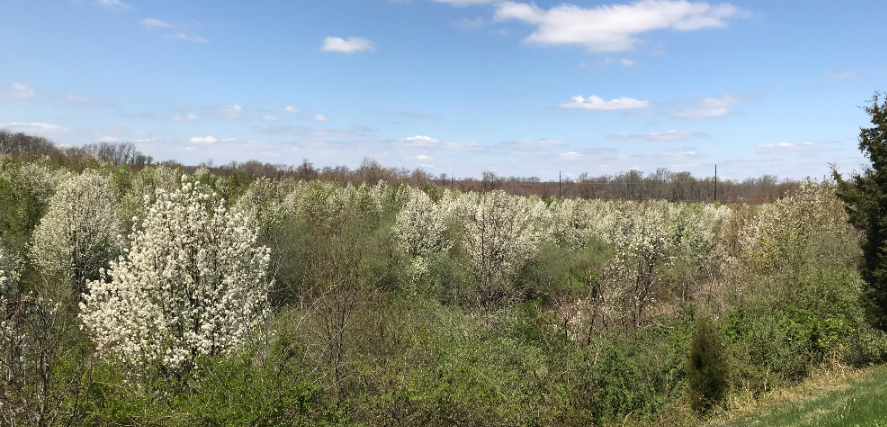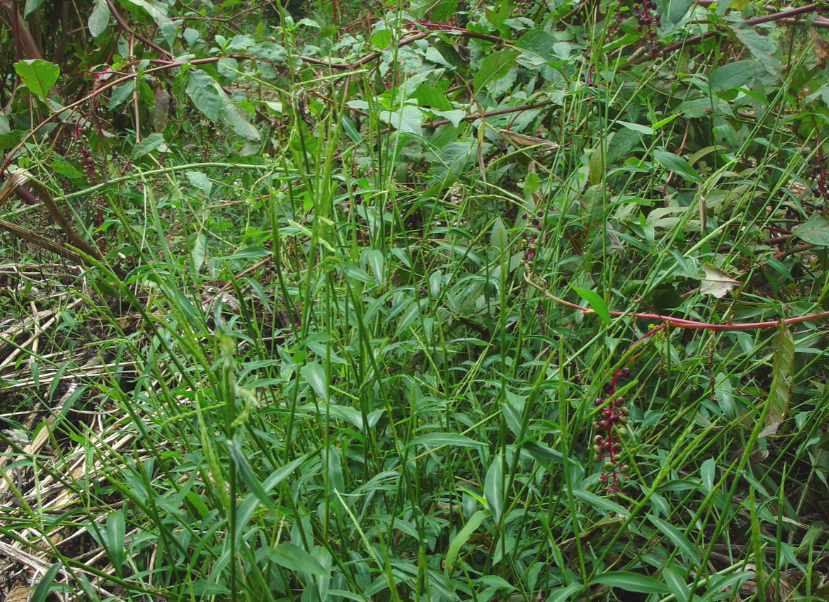
Category: Cooperative Extension

Stop those Invasives!
May 02, 2022 Written by Sue Barton, Professor - Plant & Soil Sciences
We are just past the peak of the Callery pear bloom now, our roadsides and abandoned fields having exploded into a sea of white blossoms. This may look “pretty”, but if you understand ecology and the impact these aggressive trees have on our ecosystem, you are more likely to feel anger than see attractiveness. Pyrus calleryana ‘Bradford’, the first Callery pear cultivar, has a weak branch structure with V-shaped branch angles that split after 15 to 20 years of growth. Narrow branch angles prompted the breeding and release of many more cultivars such as ‘Cleveland Select’, ’Chanticleer’ and ‘Aristocrat’. In the past, Bradford pear was almost sterile and produced only a few fruits, but with so many newer cultivars in the landscape, they can now cross pollinate and produce an abundance of fruit. Fruit are small and inedible but are carried by birds who drop seed in roadside ditches, easements and natural areas. Many of these invasive flowering pears have thorns and aggressively choke out native trees, like serviceberry that once bloomed along wood edges in early spring. Do not plant Callery pears and consider removing and replacing any growing on your property with a native small flowering tree, such as Carolina silverbell, Washington hawthorn, dogwood, fringe tree, serviceberry, or redbud.
Callery pears are on the list of plants that will no longer be propagated or sold in Delaware as of July 2022. Look for information in your local garden center about this new law and the alternative suggestions to the 10 common invasive species still bought and sold in Delaware prior to this year.
Japanese stilt grass (Microstegium vimineum) is another problem plant in our region. It is an annual grass that has become the default groundcover for roadsides, much of our wood edges and even established woodlands. It thrives in shady sites but will also grow in the sun. Japanese stilt grass germinates in the spring, about two weeks before crabgrass, but doesn’t flower and produce seed until early fall. It is a sprawling grass that roots at the nodes and can completely cover other low growing plants. Our first opportunity for control is to treat known areas of stilt grass with a preemergent herbicide, much like we control crabgrass. The difference is that when we control stilt grass, the herbicide should be applied two weeks earlier than for crabgrass control. You can also control Japanese stilt grass by mowing it in September as it starts to flower but before seeds ripen. You can prevent a new crop of seeds from developing and growing the following year. The trouble with this strategy is there is so much stilt grass seed around that seed can easily blow into an area you have mowed. Stilt grass is easy to pull, so it can be removed from landscape beds, but that strategy isn’t practical for the lawn or large areas of roadsides or woodlands. Work has begun on biological control (Japanese stilt grass is kept in check with insect pests in its native regions) but beneficial insect release is many years away.
These are just two examples of invasive plants that are changing the environment in which we live. Think long and hard before planting a known invasive plant in your landscape and consider removing the ones you already have. Of course, follow the new law as of July 2022. For a list of plants on the Delaware Invasive Species List, visit the Delaware Invasive Species Council's resource web page.

For more information about horticulture in Delaware visit www.sites.udel.edu/suebarton and follow me on Instagram (@sbartonhort). The Sue Barton blog has a calendar of events that includes many interesting meetings, workshops and webinars for interested gardeners and landscape professionals. Check it out!
